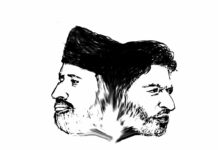Dr. Bashir A Dabla
World over the ‘international disability day’ was observed on December 3, 2010. Our state too had the honour to observe it, but in a different way. While in different countries of the world and in different parts of India, old programmes were assessed in terms of their output, new programmes were initiated for total welfare of disabled. In our state, the day saw some demonstrations as disabled came on the roads to show their resentment against government apathy towards them. They were beaten by police and arrested. It is tragic and shameful. The inhuman treatment meted out to them reflected the pathological approach which we were compelled to adopt about all important matters during last two decades. This also symbolizes the state’s response to crucial human problems in the recent past.
“Disability” refers to the people with a permanent illness or injury that makes it difficult for them to move part of their body completely or easily. These people are generally dependent on others. The J&K state, according to 2001 census, has a total disabled population of 302,670 (272,816 males and 130,853 females). According to estimates, this number has increased to 605,340 (343,632 males and 261,708 females) in 2009. According to Indian census reports there are five major types of disabilities in the state – ‘seeing’, ‘speech’, ‘hearing’, ‘movement’ and ‘mental’.
The mental and movement disability were found to be dominant while other disabilities were comparatively low.
While 2.12 percent of the total population at all-India level suffers from such disabilities, in J&K 3.0 % of population is disabled. The percentage of disabled population in J&K is higher in comparison to northern states of Punjab (1.74 %) and Himachal Pradesh (2.56 %) and Union Territory of Chandigarh (1.72 %). This higher proportion of disabled in J&K can only be attributed to perpetual conflict in which thousands of people were treated brutally and beaten mercilessly or have suffered mentally. This gets confirmed from the district-level disability data according to which border and militancy affected districts have more number of disabled people. So the situation in Kashmir needs a different treatment than the one applied in other states.
Despite the higher proportion of disability, J&K has not responded to the problem in a way it should. The state has not carried out any survey or census of the disabled. Last year, after publishing an article in newspaper, I was surprised to receive a letter from District Social Welfare Officer requesting me to provide the necessary data, so that the department can distribute help among disabled people.
In such a situation, it is imperative to carry out a comprehensive survey of disabled persons at district and tehsil or block level at the earliest. Subsequently, a long-term policy perspective document must be prepared by experts and professionals to highlight the immediate relief and durable rehabilitation. Different programmes and schemes must be devised and implemented sincerely and seriously. Every direct and indirect implication of J&K Disability Act of 1998 must be taken care of. The disabled persons organizations’ demand of a separate commission about disability, must be given due consideration. Last, but not the least, the role of NGOs in the cause of disability stands crucial. So, these organizations must necessarily and continuously intervene in this problem.















